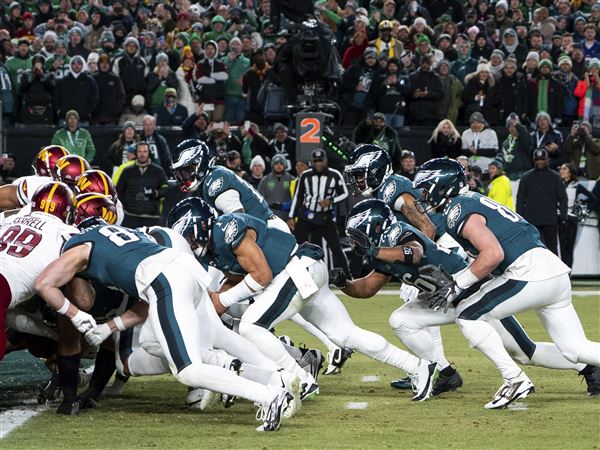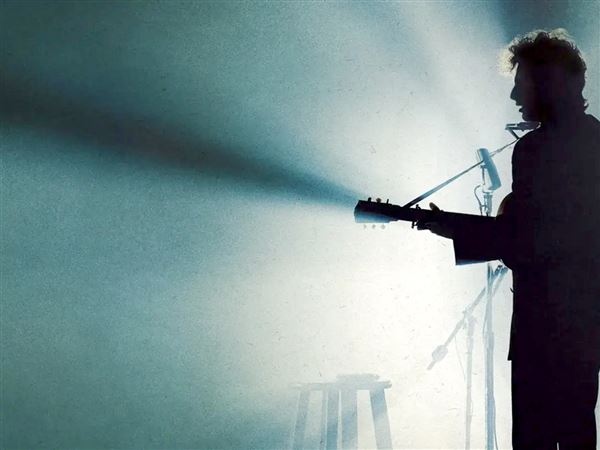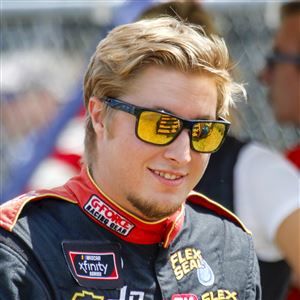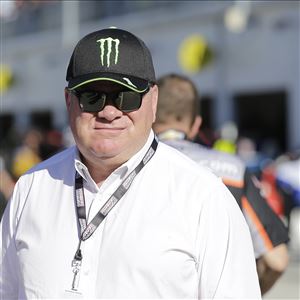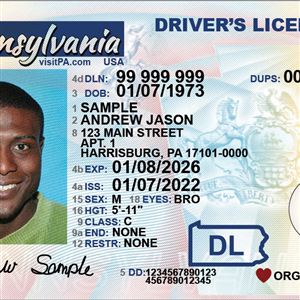Kurt Busch didn’t know if there would be a national anthem before the first eNASCAR iRacing Pro Invitational Series race a couple of weeks ago at the virtual Homestead-Miami Speedway in Florida. So he and his wife, Ashley, posted a video of the couple saluting the American flag as he played the song over his iPhone.
Amusing but respectful. Authentic but self-aware. Exactly the tone the veteran driver for Fox Chapel native Chip Ganassi’s eponymous team feels his sport should be setting as it shifts from paved asphalt to simulators amid the COVID-19 pandemic.
“I think a light-hearted approach that’s creative and fun, but also with that sprinkle of seriousness,” Busch told the Post-Gazette Tuesday. “Because there’s the emotions and the feeling of competition and doing the right thing out on the track because of how realistic things are. So it’s a blend because all of us are in this unique world right now.”
That blend has been a hit with fans through two races. The Fox broadcast of the race this past week at virtual Texas Motor Speedway attracted an audience of more than 1.3 million fans, an increase of more than 400,000 viewers for the first race.
Busch had started exactly zero races on the iRacing platform before the Homestead event. He had to have a $7,000 simulator rig shipped to his home the week of the competition, and he disappeared for roughly seven hours to get it race ready. It is a sophisticated machine after all. It’s not like setting up a PlayStation.
There would be no immediate pay off. Busch finished dead last in the Homestead event, two spots behind Ganassi teammate Kyle Larson. That’s where the seriousness came in and both drivers resolved to improve.
And so the Texas event ran much more smoothly, with Larson finishing ninth and Busch finishing 10th.
On the IndyCar side, Ganassi’s teams got their first chance to compete against peers Saturday in a virtual race run at Watkins Glen International in upstate New York.
Felix Rosenqvist was by far the best of the bunch. He qualified second and stayed there all afternoon. He finished as the only driver within 11 seconds of winner Sage Karam, one of the most experienced iRacing veterans on the circuit.
Rosenqvist was not nearly as new on the scene as Busch. He’s monkeyed with the platform as recently as January, though he only had a handful of starts before the Watkins Glen race.
In some ways, he finds it more difficult to race in the simulator than in real life.
“The amount of concentration is even more than in the real car,” the 28-year-old Swede said. “In the real car, you have a lot of inputs and feedback from the car going through your body. You kind of drive more on instinct, while in the sim, you have to be alert and focused in a different way. On details, all the time.
“It’s very easy to get a bit drowsy and sort of miss a breaking point.”
For Larson, a return to iRacing has been a welcomed addition to his new socially distanced routine.
The 27-year-old first got involved with the simulating platform more than a decade ago and stayed involved regularly for about three years before family and professional obligations interfered.
He bought his current rig — as well as one for his son, Owen — about a year ago, so the Pro Invitational Series has given him a chance to run some more laps on it when he can. Or perhaps more importantly, when he’s bored.
During normal times, Larson is one of the busier racers on the circuit, running sprint car races in addition to the grueling NASCAR Cup schedule. In lieu of those events, he can now run down to his sprint car shop, where his rigs are kept, to pass the time.
He’s appreciated the freedom and thinks CGR has found the right balance of business and pleasure so far.
“I feel like our team has not made it an obligation for us to do any of it, so that’s what’s kept it fun for me and Kurt,” Larson said.
Adam Bittner: abittner@post-gazette.com and Twitter @fugimaster24.
First Published: April 3, 2020, 11:00 a.m.


